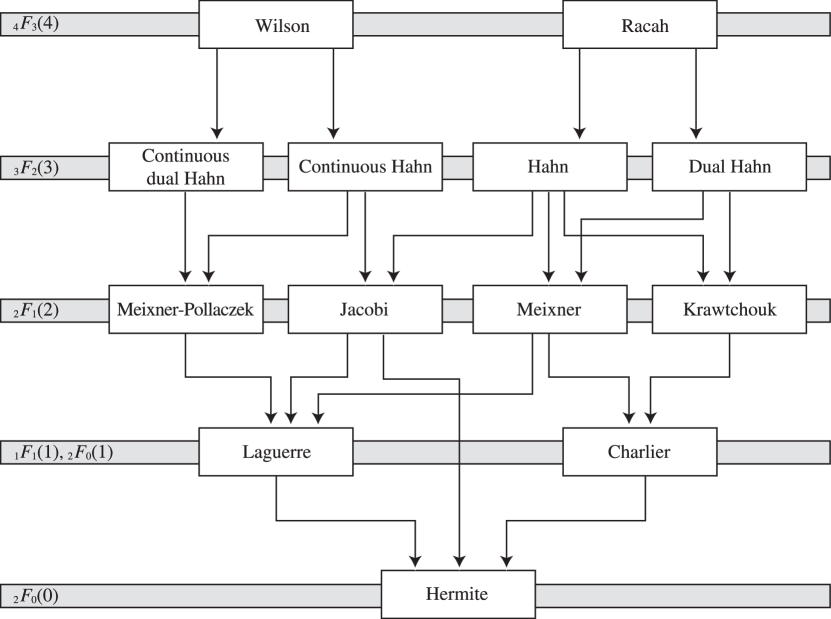classical orthogonal polynomials
(0.012 seconds)
1—10 of 44 matching pages
1: 18.3 Definitions
§18.3 Definitions
… ►With the property that is again a system of OP’s. See §18.9(iii).
As given by a Rodrigues formula (18.5.5).
| Name | Constraints | ||||||
|---|---|---|---|---|---|---|---|
| … | |||||||
2: 18.41 Tables
3: 18.38 Mathematical Applications
…
►
§18.38(i) Classical OP’s: Numerical Analysis
… ►Quadrature
… ►Integrable Systems
… ►Riemann–Hilbert Problems
… ►Radon Transform
…4: 18.13 Continued Fractions
5: 18.7 Interrelations and Limit Relations
§18.7 Interrelations and Limit Relations
►§18.7(i) Linear Transformations
… ►§18.7(ii) Quadratic Transformations
… ►Equations (18.7.13)–(18.7.20) are special cases of (18.2.22)–(18.2.23). ►§18.7(iii) Limit Relations
…6: 18.5 Explicit Representations
§18.5 Explicit Representations
… ► … ►§18.5(iii) Finite Power Series, the Hypergeometric Function, and Generalized Hypergeometric Functions
… ► … ►7: 18.16 Zeros
…
►
Inequalities
… ►Asymptotic Behavior
… ►when . … ►For further information on the zeros of the classical orthogonal polynomials, see Szegő (1975, Chapter VI), Erdélyi et al. (1953b, §§10.16 and 10.17), Gatteschi (1987, 2002), López and Temme (1999a), and Temme (1990a). ►§18.16(vii) Discriminants
…8: 18.14 Inequalities
…
►

